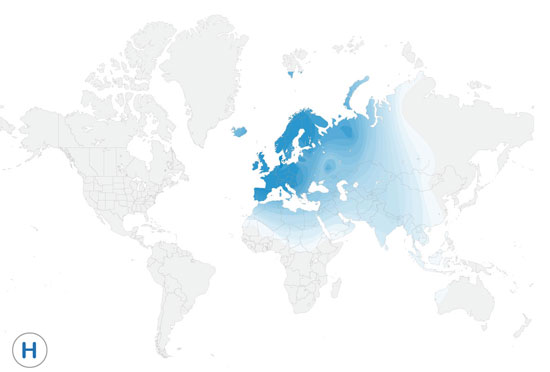

Haplogroup H2 Distribution
Return to mtDNA Test Results Summary Page
Mitochondrial haplogroup H is a predominantly European haplogroup that participated in a population expansion beginning approximately 20,000 years ago. Overall more than 40% of the total European population carries this mitochondrial variation. It is rather uniformly distributed throughout Europe suggesting a major role in the peopling of Europe, and descendant lineages of the original haplogroup H appear in the Near East as a result of migration. It can also be found in the Caucasus and Central Asian regions, though frequencies are considerably lower than that of Europe. More than twenty subclades of haplogroup H have been identified with several showing regional distributions.
A Haplogroup assignment of H* indicates that you belong to Haplogroup H, but not to any of the presently known subclades. Future work will undoubtedly better resolve the distribution and historical characteristics of this haplogroup.
H2 – H2 is somewhat common in Eastern Europe and the Caucasus, but likely spread from Western Europe because it is not found in significant frequency in the Near East. It is found in its highest frequency in Germany and Scotland.
H2a – Haplogroup H2a is found most frequently in Eastern Europe, and at a low frequency in Western Europe. Unlike its parent branch H2, H2a’s geographical distribution extends to Central Asia.
H2b – H2b is the branch to which the CRS belongs. Further research will better resolve the distribution and historical characteristics of this haplogroup.
